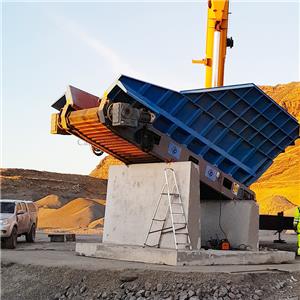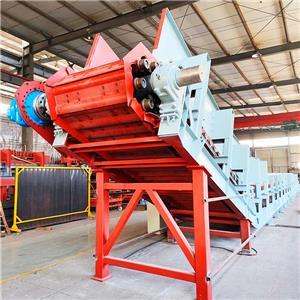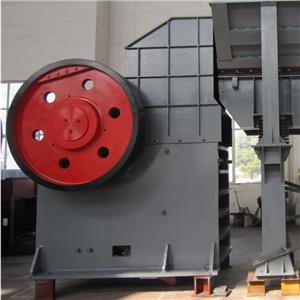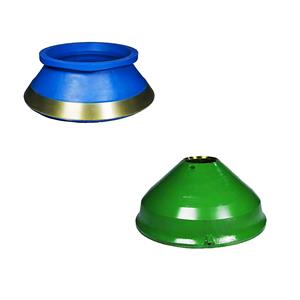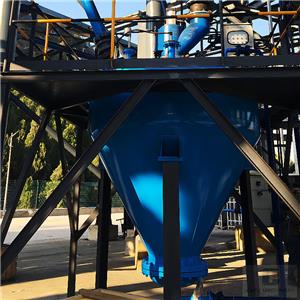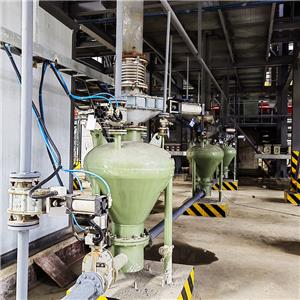Selection of Starch Pneumatic Conveying System
In the selection of starch pneumatic conveying systems, the choice between negative pressure and positive pressure should be comprehensively judged based on the material properties of starch (such as particle size, hygroscopicity, fluidity) and conveying scenarios (distance, number of feeding points, hygiene requirements, etc.). The following is an analysis of the core characteristics and applicable scenarios of both: 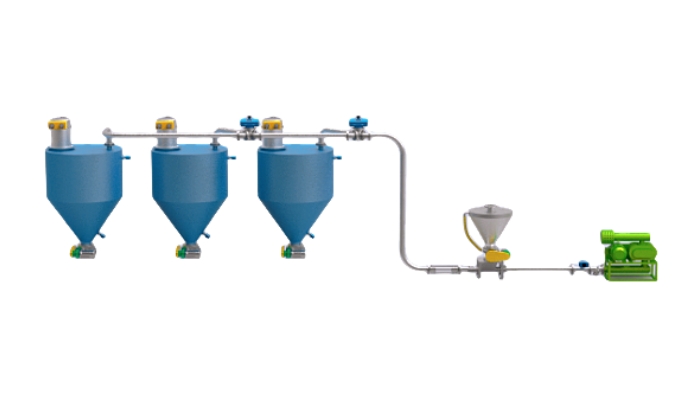
I. Negative Pressure Conveying System (Vacuum Conveying)
Core Advantages:
● Good dust emission control: The system is in a negative pressure state as a whole, so materials will not leak from pipeline gaps, which can effectively reduce starch dust pollution (especially suitable for food-grade starch, which needs to meet hygiene standards).
● Flexible multi-point feeding: It can suck starch from multiple hoppers, packaging bags or storage equipment at the same time, suitable for scattered feeding scenarios in the production line (such as multiple raw material silos feeding one mixing tank).
● Low requirements for equipment tightness: The feeding port does not need complex sealing devices, and the operation is convenient.
Limitations:
● Short conveying distance: The air flow rate under negative pressure is limited, which is usually suitable for scenarios where the horizontal distance is less than 50 meters and the vertical lifting is less than 15 meters. Excessively long distance is prone to pipeline blockage.
● High energy consumption: The vacuum pump needs to continuously maintain negative pressure, and the energy consumption is higher than that of the positive pressure system, especially in high-concentration conveying.
● Sensitive to material humidity: If starch absorbs moisture and agglomerates, it may block the filter at the end of the negative pressure pipeline (frequent cleaning is required, otherwise the vacuum degree will be affected).
Core Advantages:
● Long conveying distance and high efficiency: Under positive pressure, the air has sufficient kinetic energy, which can realize long-distance conveying with a horizontal distance of more than 100 meters and a vertical lifting of more than 30 meters, and the conveying capacity is larger (suitable for large-scale production, such as conveying from starch factories to distant warehouses or workshops).
● Adaptable to high-concentration conveying: It can operate stably under high material concentration (high solid-gas ratio), reducing air consumption and pipeline wear (starch particles have less impact on the pipeline).
● Strong adaptability to single-point feeding: If the starch source is single (such as feeding from a large storage silo), the feeding device of the positive pressure system (such as a rotary valve, air lock) has reliable sealing and can stably and continuously feed.
Limitations:
High risk of dust emission: The system is in a positive pressure state. If the pipeline interface is not well sealed, material leakage and dust emission are prone to occur (it is necessary to strictly ensure the tightness of pipeline flanges and valves, which increases maintenance costs).
III. Selection Suggestions
Scenarios where negative pressure is preferred:
● Production of food-grade starch (such as edible corn starch, potato starch), which requires strict control of dust pollution and hygiene risks;
● Short-distance conveying (such as feeding from multiple raw material bags to a mixer in the workshop, with a horizontal distance of less than 30 meters);
● Multi-point feeding (such as feeding from more than 3 scattered silos to one storage tank);
● Mainly manual feeding (reducing dust exposure during manual operation).
Scenarios where positive pressure is preferred:
● Long-distance conveying of industrial-grade starch (such as conveying from factory warehouses to packaging workshops 100 meters away);
● Single-point feeding and multi-point discharging (such as one central silo feeding 5 production lines);
● High-yield continuous production (such as hourly conveying capacity > 5 tons, the efficiency advantage of positive pressure is more obvious).
Special case: Mixed system
If there are both short-distance multi-point feeding and long-distance conveying requirements (such as first collecting starch from multiple points under negative pressure, then conveying it to the warehouse over a long distance under positive pressure), a "negative pressure + positive pressure" combined system can be adopted (such as lifting to a transfer silo under negative pressure, then conveying under positive pressure) to balance flexibility and efficiency.
Summary
The core of selecting starch pneumatic conveying: short distance, multi-point feeding, small conveying capacity, high hygiene requirements → choose negative pressure; long distance, single-point feeding, high conveying capacity → choose positive pressure.
However, in practical applications, it is necessary to further optimize in combination with details such as the fluidity of starch (such as whether it is easy to agglomerate) and pipeline layout (whether there are many bends).


